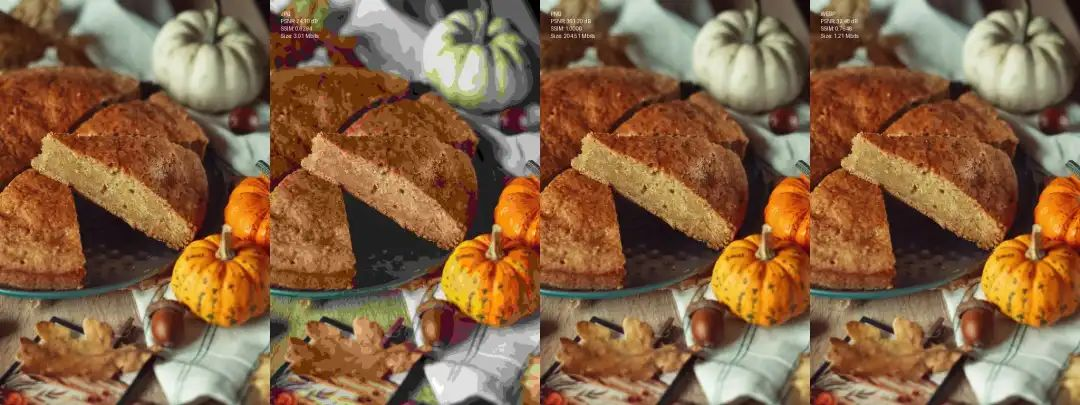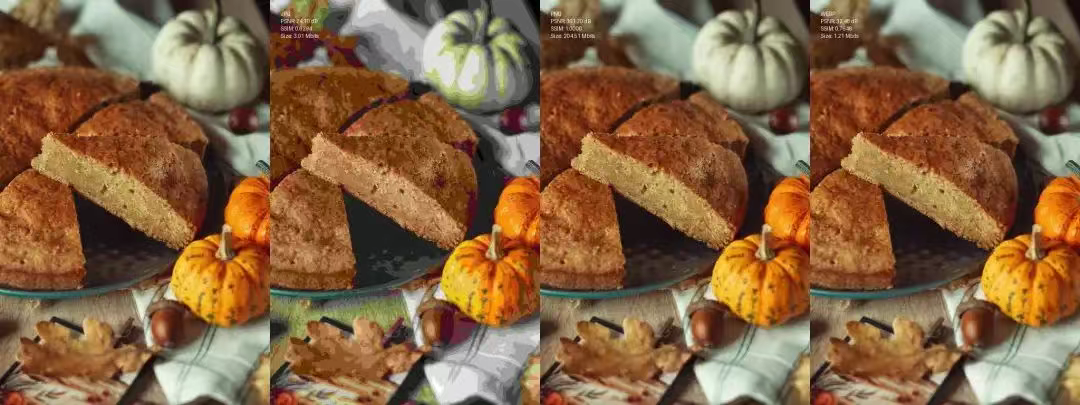Optimizing Image Formats in Computer Vision and Image Processing: PNG, JPG, and WEBP in OpenCV

In computer vision and image processing applications, choosing the right image format can impact performance and quality. Whether you're preprocessing data for training deep learning models, running inference on real-time systems, or handling large datasets, understanding the strengths and weaknesses of PNG, JPG, and WEBP can help you make informed choices. Let's dive into the unique characteristics of each format for image processing and provide practical code examples demonstrating how to load and save these formats using OpenCV in Python.
Table of Contents
- PNG (Portable Network Graphics)
- JPG/JPEG (Joint Photographic Experts Group)
- WEBP (Web Picture Format)
1. PNG (Portable Network Graphics)
Advantages:
PNG supports lossless compression, preserving all image details and transparency. It's ideal for image processing tasks requiring precise pixel values (e.g., segmentation masks or scientific image analysis).
Disadvantages:
PNG files are typically larger, which may slow down processing pipelines, especially with large datasets. If storage or bandwidth is a constraint, this could affect performance, making PNG less suitable for real-time or resource-limited applications.
Usage in OpenCV:
import cv2
# Reading a PNG imageimage = cv2.imread("example.png", cv2.IMREAD_UNCHANGED) # To retain transparency if present
# Saving as PNG with maximum quality (lossless compression)cv2.imwrite("output.png", image, [cv2.IMWRITE_PNG_COMPRESSION, 0]) # 0 is lossless, 9 is max compression
2. JPG/JPEG (Joint Photographic Experts Group)
Advantages:
JPG is widely used for photos and natural images, offering efficient lossy compression. It's excellent for reducing file sizes in large image datasets or when speed is critical. In computer vision, JPG is often used for datasets where pixel precision isn't crucial, such as object detection or classification tasks.
Disadvantages:
JPG's lossy nature leads to some data loss, especially after multiple saves, which may degrade image quality over time. It also lacks transparency support, limiting its use in certain applications.
Usage in OpenCV:
import cv2
# Reading a JPG imageimage = cv2.imread("example.jpg")
# Saving as JPG with quality control (lossy compression)cv2.imwrite("output.jpg", image, [cv2.IMWRITE_JPEG_QUALITY, 90]) # Quality range: 0 to 100, 100 is best quality
3. WEBP (Web Picture Format)
Advantages:
WEBP offers both lossy and lossless compression, making it a versatile choice. It combines PNG's transparency with JPG's compression efficiency, which is beneficial for computer vision applications requiring high performance and storage efficiency. For machine learning, using WEBP can save storage space and speed up dataset loading, especially for large datasets.
Disadvantages:
Despite its efficiency, WEBP isn't universally supported across all platforms or older software. However, for image processing workflows using modern libraries, WEBP is an increasingly powerful option.
I also recommend checking out a study by Google comparing WebP and JPG. https://developers.google.com/speed/webp/docs/webp_study
Usage in OpenCV:
# Reading a WEBP imageimage = cv2.imread("example.webp", cv2.IMREAD_UNCHANGED)
# Saving as WEBP with compression control# Lossless compression (quality=100) vs. lossy compression (quality < 100)cv2.imwrite("output_lossy.webp", image, [cv2.IMWRITE_WEBP_QUALITY, 75]) # Lossy with quality at 75cv2.imwrite("output_lossless.webp", image, [cv2.IMWRITE_WEBP_QUALITY, 100]) # 100 enables lossless
Experiments

Author's results

Author's results

Author's results
Comparison Summary
PNG: Ideal for lossless compression and transparency; best for pixel-precise applications but may consume significant storage.
JPG: This format suits natural images where some quality loss is acceptable. It's excellent for large datasets but not for images requiring transparency or exact pixel preservation.
WEBP: Versatile, offering both lossy and lossless options. It efficiently reduces storage usage while maintaining high quality, making it great for computer vision applications needing fast access and moderate compression.
Selecting the right image format and settings is crucial for maximizing the efficiency and performance of computer vision and image processing workflows. Whether you're training models, analyzing data, or deploying applications, understanding these differences allows you to optimize for quality, speed, and storage—leading to more robust and efficient systems.